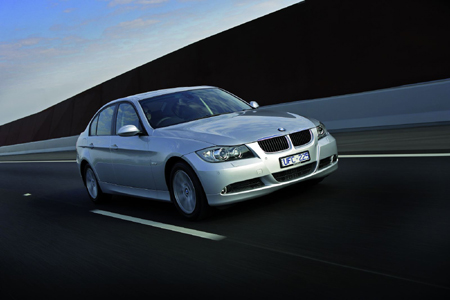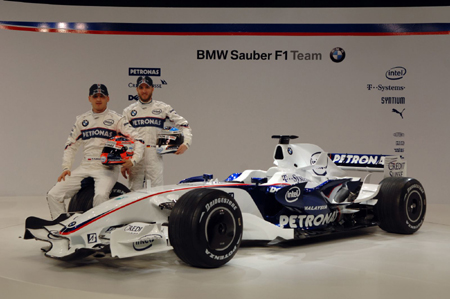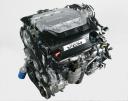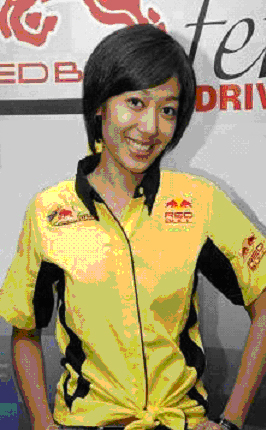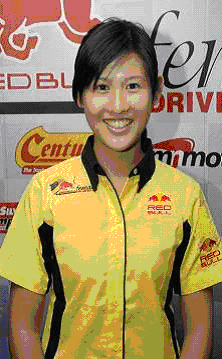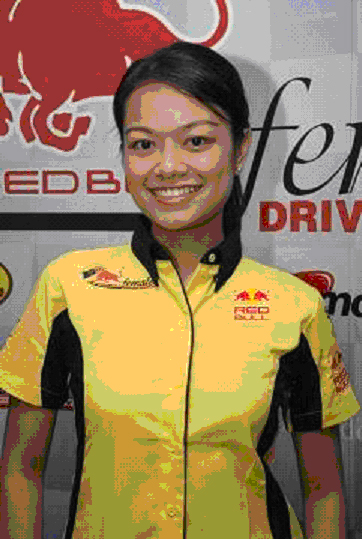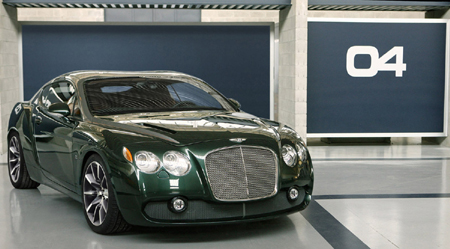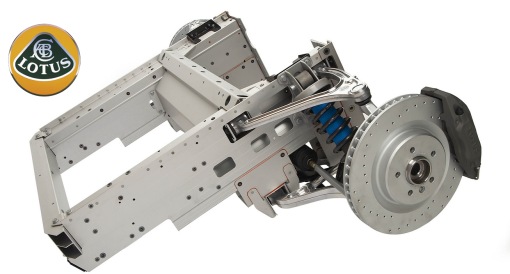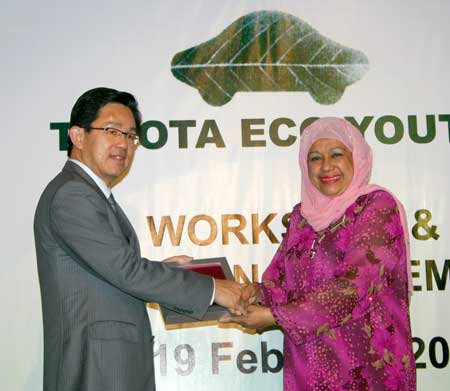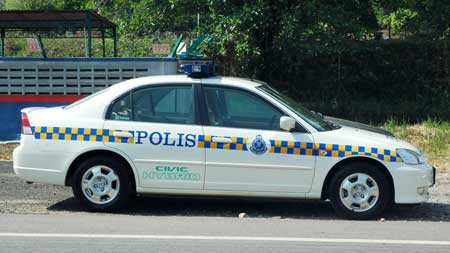The Toyota Vios, as a car, does not come across as a high speed performer, nor is it a sporty car. We at AW do acknowledge that it sells by the thousands, and you see them all over the country. One minute you see a Vios driven by a young man; the next minute you see an elderly man or woman going past in another. It is also popular amongst the young ladies. We got one from UMW Toyota Motor Sdn Bhd, and decided to check it out, and try to find the magic ingredient or ingredients that makes it so popular.
The face-lifted Toyota Vios, launched recently by UMW Toyota, comes with a new, more aggressive looking front mask, and a revamped rear end. The new looks are getting a mixed response from the Malaysian motoring public. Some people I talk to like its new look, which attempt to make it look like a ‘baby’ Camry, but somehow the smaller size does not allow it to carry it off well.One friend actually said that it looks like a fish, referring to the shape of the new grille. There are also others that love the new lines, as they think that it looks sporty. Finally, it is a matter of opinion, and what you see is what you get; make your own choice. Anyway, it is a matter of opinion, and we will leave it to the individual to choose. Personally, I think it looks pretty much the same one way or the other, and it is what’s underneath the skin that counts.
Basically the Vios retains the same mechanicals as the previous model, with some bits and pieces of improvements added to make it more appealing to the young, for the Vios is mainly targeted at the young buyer.
We clocked over a thousand kilometres in the new Vios to see what makes it tick, and why it remains one of the top sellers in this country, and in the region.
I think that one of the Vios’ endearing qualities must be the ease of driving it. The steering is light to the touch, and the car is very responsive to steering input. Handling is quite good, and the Vios gives you a reassuring feeling of security when you are on the road. A good caster angle built into the suspension geometry give you unerring straight-line stability, and the Vios is good up to an indicated 180 km/hr, which also happens to be its top speed. Power delivery is smooth, not too much and not too little, and the electronically controlled gearbox has smooth changes and ratios that seem to suit the car very well.
Around corners, the Vios is very obedient, and you can get quite a good feel for the road. The suspension is supple enough to have just the right amount of ‘give’, and stiff enough to allow not more than a little bit of roll when you push it to the extreme. Given that it is a relatively light car, and considering the fact that the designers have to cater for a weight variance of around 300 kg when fully loaded, the base set-up has to be a little firm, but in the Vios, it is not overly so.The Vios comes with independent Macpherson strut suspension at the front, a torsion beam at the rear, and coil springs all round. The electric power steering helps to save fuel, and is geared just right to give the driver enough ‘feel’.
Stopping power is adequate from the ventilated front discs working in tandem with the rear solid discs, and there is EBD and BA, plus ABS to help out in emergency situations.
The engine produces 109 ps of power at 6,000 rpm, and 141 Nm of torque at 4,200 rpm. This power is just enough to excite, and about right for a car of this size, giving an acceleration of zero to 100 km/hr is a little under 12 seconds, yet allows one to have some semblance of fuel economy.
The Vios appears most efficient in the 90 – 120 km/h territory, but gets a little thirstier when you push it above that speed. Our first refuel happened after 377 kilometres, and we put in RM75.44 of fuel. For this session, we drove the car quite fast, and that cost an average of 20 sen per kilometre. Subsequently, we ran the fuel tank dry after fueling it to the brim, and the Vios rolled to a stop after 447 kilometres. On a 42 litre tank, that would mean we got 10.64 kilometres per litre, or an average of 18 sen per kilometre. This is quite a respectable figure, considering that the current price of fuel is RM1.92.
Add to this the legendary reliability of anything Toyota, plus the service network, and you have a winner. In fact, there is talk that if you plaster a Toyota badge on any car, it immediately becomes a sure seller. In real life it is not as simple as this, because behind that badge goes a whole lot of research and testing to make sure the Toyota standards of quality, durability and reliability are adhered to.
Suffice to say that all these above standards have been met in the new Vios, and it will continue to serve its owners well, as most Toyotas always have.




